
This simple, inexpensive shop accessory is an easy to build vacuum former that lets you form canopies, cowls and other details up to 7x7 inches in size. The plastic for forming is cheap (or even free) by reusing grocery store packaging or fast food outlets. You probably already have all the tools and half the materials on hand.
The platen (forming surface) is 8x8 inches. My prototype setup creates vacuum using a piston in a 12-long piece of 4-inch diameter PVC pipe. It produces more than enough vacuum for forming, more than is available from a household vacuum cleaner. I tried using a longer piece of PVC pipe but there was no noticeable increase in performance.
TOOLS AND MATERIALS
You’ll need a coping saw, electric hand drill, a 1/16- or 1/8inch diameter drill bit, a 1/2-inch spade drill bit, sanding sticks, pencil, ruler, and a scratch awl. A crosscut wood saw would be nice for cutting the PVC, but the coping saw gets the job done. A scroll or band saw would be ideal, but not really necessary.
As for the building materials, I used mostly what plywood I had on hand. If you have thicker plywood, it will work just fine. The only important dimensions are for the PVC pipe size. The purpose of the pine 2x4 is to raise the platen surface high enough to clear the C-clamps holding the device to the edge of the table and take up any stress on this device. I used Liquid Nails construction adhesive and sealer to hold the PVC pipe to the 2x4 and to glue the other major pieces together. It also stops air leaks. Use generously to stick the PVC to the 2x4. My total cost was $38.05 total for materials at the Lowe’s home improvement store.
THE PLASTIC
Bu hikaye Model Airplane News dergisinin October 2020 sayısından alınmıştır.
Start your 7-day Magzter GOLD free trial to access thousands of curated premium stories, and 9,000+ magazines and newspapers.
Already a subscriber ? Giriş Yap
Bu hikaye Model Airplane News dergisinin October 2020 sayısından alınmıştır.
Start your 7-day Magzter GOLD free trial to access thousands of curated premium stories, and 9,000+ magazines and newspapers.
Already a subscriber? Giriş Yap
Legend Hobby / Seagull Models - Cessna Grand Caravan 208
The Cessna Grand Caravan 208 is a legend in aviation circles. A single engine utility aircraft that punches up with capabilities that rival many twin engine aircraft in its class. Its seemingly simple configuration belies its near extreme utility.
PROPER CG LOCATION FOR AEROBATICS
If you are getting into aerobatics and are starting to perform more advanced maneuvers, it is time to discuss ways you can not only become a better pilot, but how you can also improve the flight characteristics of your airplanes.
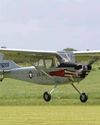
Legend Hobby 13-Foot L-19 Bird Dog/ Cessna O-1
This famous multi-mission single engine observation aircraft served from 1950-1974. From calling out target locations to providing intel/recon information, the Bird Dog was a valued asset in both the Korean War and Vietnam.
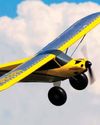
EARN YOUR WINGS
10 Tips for First-Flight Success
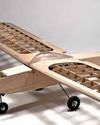
Old School Model Works Fifty Six
The Fifty Six takes its design cues from the original .09- to .15-size Carl Goldberg Falcon 56 of the 1960s. Reworked to incorporate modern, lasercut techniques to make kit building better than ever.
FLYING TWINS Multi-engine warbirds made easy
Let’s face it, there’s just something extra special about twin-engine RC aircraft. Most modelers stop what they’re doing when a twin fires up on the flightline.
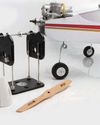
HOW TO BALANCE PROPELLERS
Four easy steps to increase performance and reduce vibration
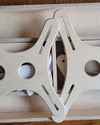
PRODUCT REVIEW: RC PLANE STANDS BENCHTOP MODEL
I’m a sucker for shop stuff. I buy tools I will probably never use just because they are cool, or I might need to use them someday. When Glen from RC Plane Stands reached out about a review, however, I knew as soon as I browsed their website that I would be receiving something I would use a lot, maybe even daily.
SPIRIT OF RHINEBECK AWARD WINNER
A close up of Norman Malinowski’s 1/3-scale Albatros
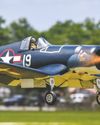
CENTER OF GRAVITY BASICS
The secret to a plane that flies well